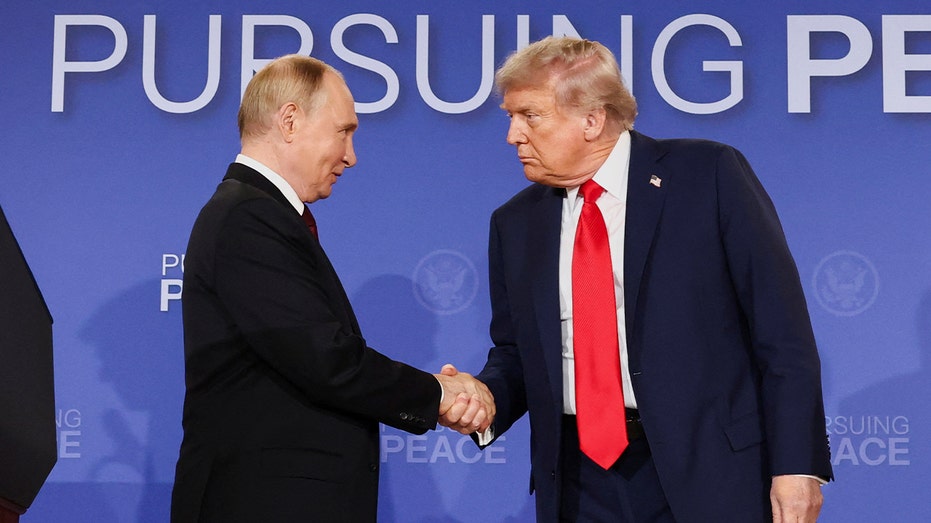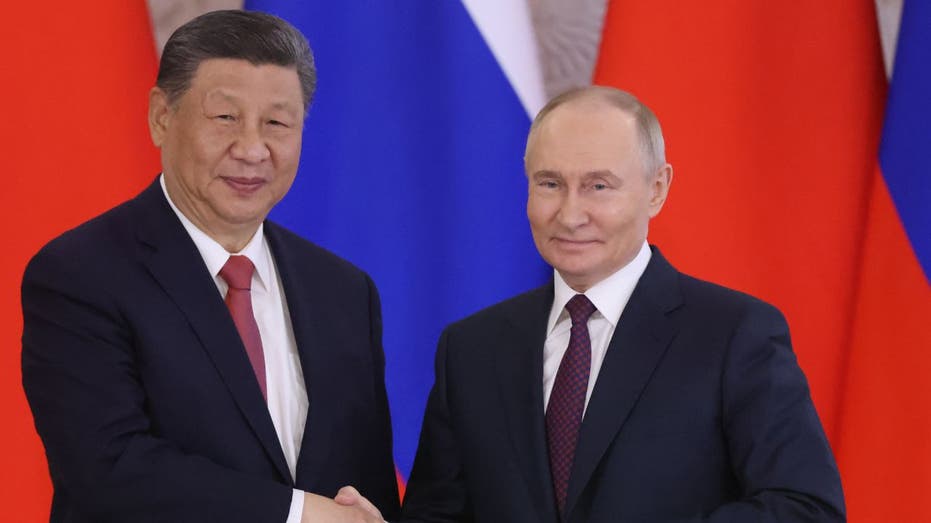President Donald Trump discusses how his meeting with Russian President Vladimir Putin went and what’s next in peace negotiations and more in an exclusive interview on ‘Hannity.’
The headlines say the Alaska summit between President Donald Trump and Vladimir Putin was about Ukraine. Commentators in Brussels and Washington rehearse the familiar debates: Was Trump too soft on Moscow? Did he undermine Kyiv?
But that framing misses the bigger picture.
The Trump administration has already set the terms of the 21st-century contest: The United States faces its greatest long-term threat not from Russia, but from China. From sweeping sanctions on Beijing’s access to advanced AI chips, to trading U.S. security guarantees for alignment in the Middle East and Indo-Pacific, Trump has consistently structured foreign policy around containing China’s rise. Against that backdrop, his Russia outreach is not a distraction. It is a deliberate attempt to bring coherence to an America-first strategy — one that pits him against the old globalist consensus now clinging to the EU–Ukraine agenda.
CHINA EYES TRUMP-PUTIN MEETING, GAUGES WEST’S RESOLVE ON UKRAINE
For Europe, the war in Ukraine is cast as the “front line of democracy.” Brussels, backed by Kyiv, presses for an indefinite confrontation with Russia: maximum sanctions, deeper NATO commitments, and permanent integration of Ukraine into the Western order. It is a lofty vision, but one that comes at America’s expense. NATO expansion enlarges U.S. defense guarantees. Ukraine’s demographic and economic collapse makes full territorial restoration improbable, leaving Washington with an open-ended liability. And economically, it is Europe — not the U.S. — that bore the brunt of disrupted energy and trade after 2022. America, meanwhile, has profited from LNG exports and remains relatively insulated. What Brussels seeks is clear: to lock the U.S. more deeply into continental affairs as ultimate guarantor, even if that distracts Washington from the theater that will define the century.

Trump’s Russia gambit moves in the opposite direction. It is not about indulgence but about realism, aligned with his China-first doctrine. Russia today is the weak link in Beijing’s strategy. Moscow’s dependence on Chinese capital, markets, and diplomatic cover has grown dramatically. Beijing has exploited this leverage to extract steep discounts on Russian oil, tighten yuan trade, and secure Moscow’s alignment with its geopolitical positions. Left unchecked, that “Eurasian entente” locks America into confrontation with two nuclear peers at once.
Trump’s aim is to pry the axis apart. His tools are transactional but clear. On the economic side, he has hinted at openings in energy, Arctic shipping, and critical minerals that would reduce Russia’s reliance on Beijing while creating potential supply-chain opportunities for U.S. industry. On the military side, he has paced Ukraine aid carefully — Patriots, Bradleys, HAWKs — enough to hold the line, but not a blank check that drains U.S. stockpiles or risks direct escalation. And on diplomacy, he has coupled conditional carrots with hard sticks: all relief tied to verifiable Russian steps — ceasefire, de-escalation, and distance from Beijing — with snapback sanctions always in reserve.

Russian President Vladimir Putin (R) shakes hands with Chinese President Xi Jinping (L) during their meeting at the Grand Kremlin Palace, on May 8, 2025 in Moscow, Russia. (Contributor/Getty Images / Getty Images)
This strategy aligns with everything else Trump’s administration has done. Washington has already cut China off from the most advanced AI semiconductors, blocked Beijing’s access to cloud-computing resources that power its labs, and sought to restructure rare-earth supply chains through allies from Australia to Africa. In the Middle East, Trump has exchanged U.S. security guarantees for alignment on oil and technology, explicitly framed as part of the China contest. In Asia, he has expanded basing rights in the Philippines and Guam, citing Chinese aggression in the South China Sea. Seen in this context, his Russia outreach is not a departure but a continuation of the same design.
For Putin, the Alaska summit comes at a moment of both strength and vulnerability. Moscow has clawed out modest gains in Ukraine and seen oil revenues climb 17% year-on-year in early 2025. But it faces mounting financial pressure. Its priority demand is phased re-entry into the SWIFT system, starting with Rosselkhozbank. Meanwhile, Trump has doubled tariffs on Indian goods to 50%, explicitly citing India’s Russian oil purchases, and threatened penalties as high as 100% on any country buying discounted Russian crude — a warning aimed squarely at China. Moscow knows this is serious leverage: Washington can squeeze Russian revenues not only by blocking exports but by forcing deeper discounts through third parties.
That is where the opportunity lies. If Trump can channel Russia into transactional deals — limited energy, Arctic, and minerals cooperation — while peeling Moscow even partly away from Beijing, America gains strategic space. By reducing U.S. overstretch in Europe, he frees resources for the Indo-Pacific, where the century’s outcome will be decided.
And that is the real choice before America. The first option is to follow the EU–Ukraine script — permanent sanctions, endless NATO expansion, and an open-ended confrontation that serves Europe’s agenda while draining U.S. attention. The second is Trump’s realist course — not trust, not appeasement, but cold-eyed leverage: using Russia’s weakness to fracture its bond with China, and ensuring America faces only one great power challenge, not two.
GET FOX BUSINESS ON THE GO BY CLICKING HERE
Anchorage, then, was not about a concession. It was about coherence. Trump has already recast U.S. foreign policy around the China challenge. His Russia play is part of that same framework. The Alaska meeting is best understood not as a betrayal of Ukraine or a gift to Putin, but as a strategic bid to reshape the board so the U.S. can fight — and win — the contest that truly matters.
Tanvi Ratna is a policy analyst and engineer with a decade of experience in statecraft at the intersection of geopolitics, economics, and technology. She has worked on Capitol Hill, at EY, at CoinDesk and others, shaping policy across sectors from manufacturing to AI. Follow her takes on statecraft on X and Substack.
#TrumpPutin #Alaska #summit #aims #split #Russia #China #alliance